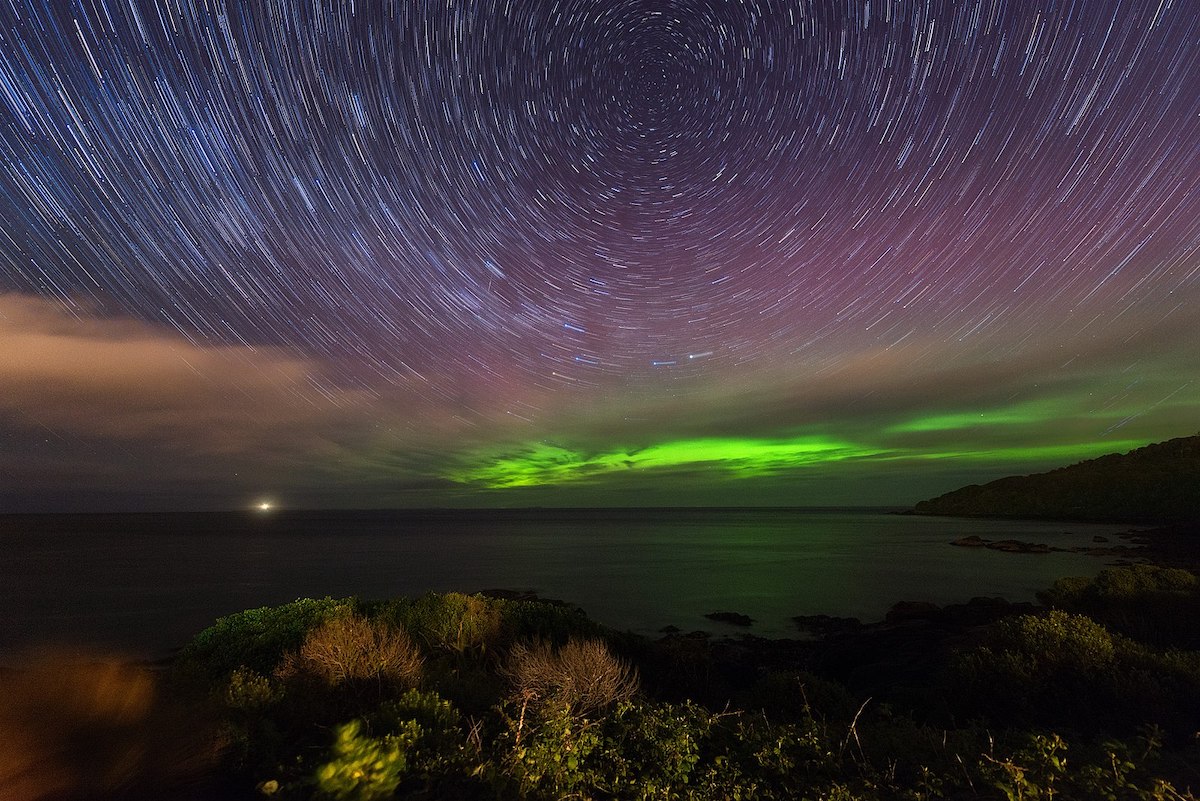
Where to See the Southern Lights (Aurora Australis): 8 Best Destinations
By: Sarah Stone
Skip to Section
The Southern Lights, otherwise known as Aurora Australis, is an otherworldly spectacle of light that you can see in the skies of the southern hemisphere. The southern counterpart to the Northern Lights (Aurora Borealis), this celestial event unfolds in a similarly dazzling array of colors.
As luck would have it, certain spots on our planet provide front-row seats to this cosmic display.
Let’s head out on a journey to those places and celebrate the marvel that is the Southern Lights!
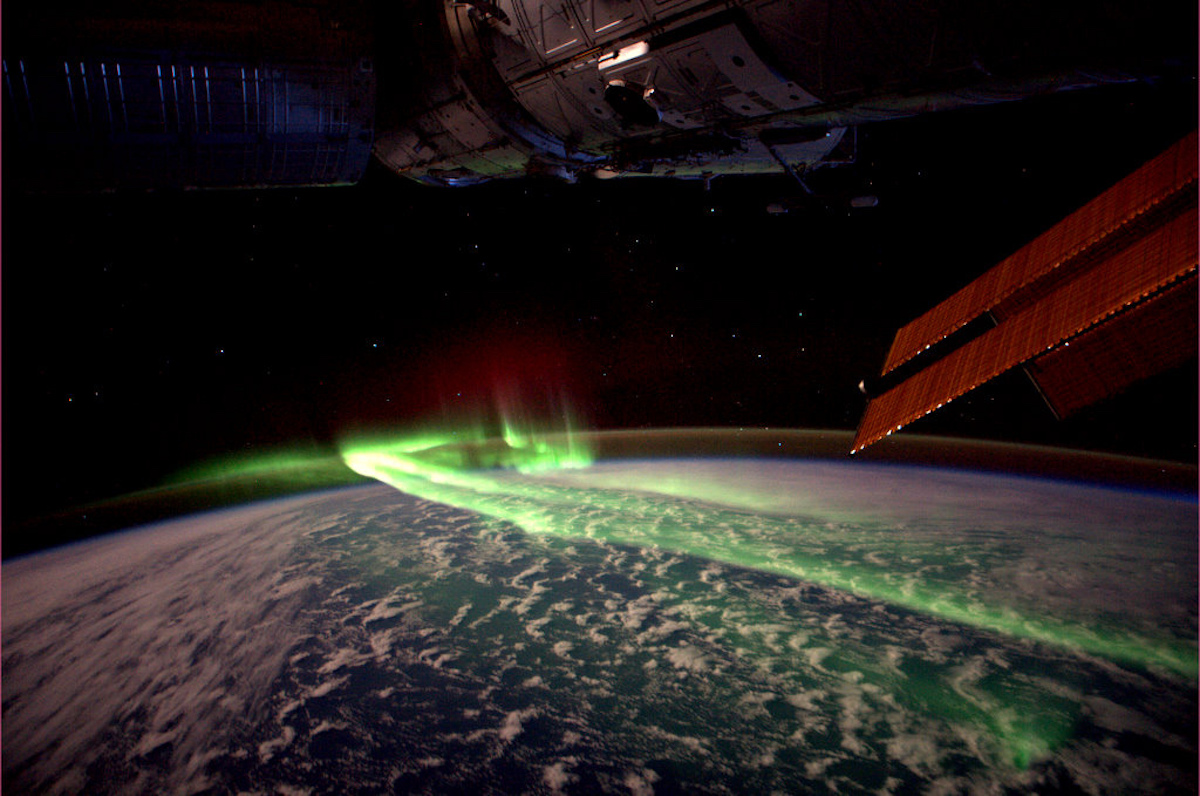
Image by the European Space Agency on Wikimedia Commons
What Are the Southern Lights?
The beautiful displays of the Aurora Australis are actually charged particles from the Sun interacting with Earth’s magnetic field and atmosphere. The Sun periodically discharges a torrent of charged particles, including electrons and protons. These emissions, which can happen during solar flares or coronal mass ejections, invariably contain particles that find their way toward Earth.
When these charged particles near our planet, they are steered by Earth’s magnetic field towards the polar regions. Here, the particles collide with atoms and molecules in our atmosphere, stirring them into a state that prompts them to give off light. The myriad hues in the aurora stem from the specific atomic or molecular species involved in these high-energy exchanges.
In the Southern Lights, green tends to be the dominant color, with occasional red, purple, and pink interspersions. The green results from oxygen atoms in the lower reaches of our atmosphere, whereas the reds are a manifestation of oxygen molecules situated at higher altitudes. The colors you’ll see are influenced by the altitude at which these interactions occur and the prevailing atmospheric conditions.
The Southern Lights’ visibility and intensity are not static but fluctuate in response to several factors. These include the Sun’s activity, the strength of the solar wind, and the Earth’s magnetic field. Not surprisingly, the Southern Lights are most commonly sighted in areas nearer to Earth’s magnetic poles. These include Antarctica, parts of Australia, New Zealand, and other far-flung locales in the southern hemisphere.
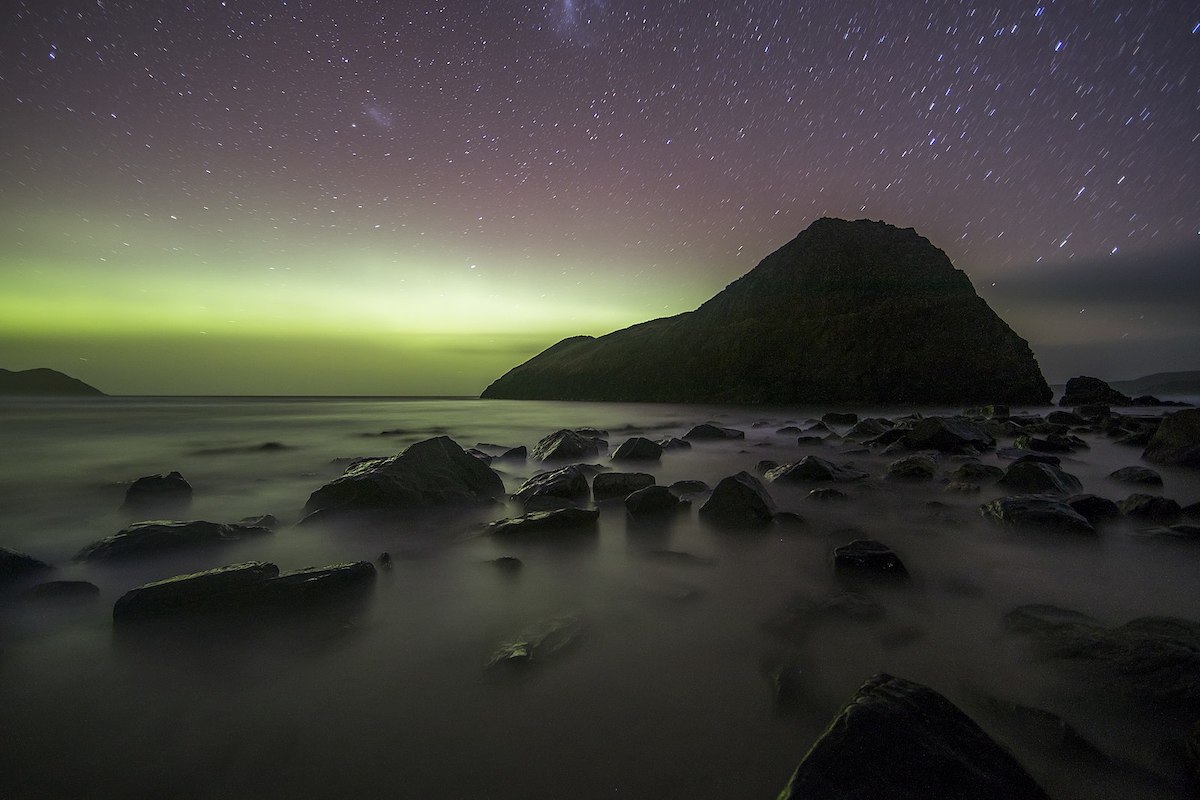
Image via Jamen Percy on Wikimedia Commons
When Can You See the Southern Lights?
The southern hemisphere’s winter months provide the perfect backdrop for viewing the Aurora Australis—the longer nights provide ample darkness, making the aurora more visible. The period of March through September, and particularly the months of June, July, and August, is optimal for viewing the Southern Lights.
During these months, the tilt of our planet and its orientation relative to the sun create ideal conditions for aurora sightings. And during the peak of the solar cycle, which recurs about every 11 years, you can see more frequent and intense aurora displays—with the next peak coming in 2025. (You can still see the Southern Lights outside this period, though!)
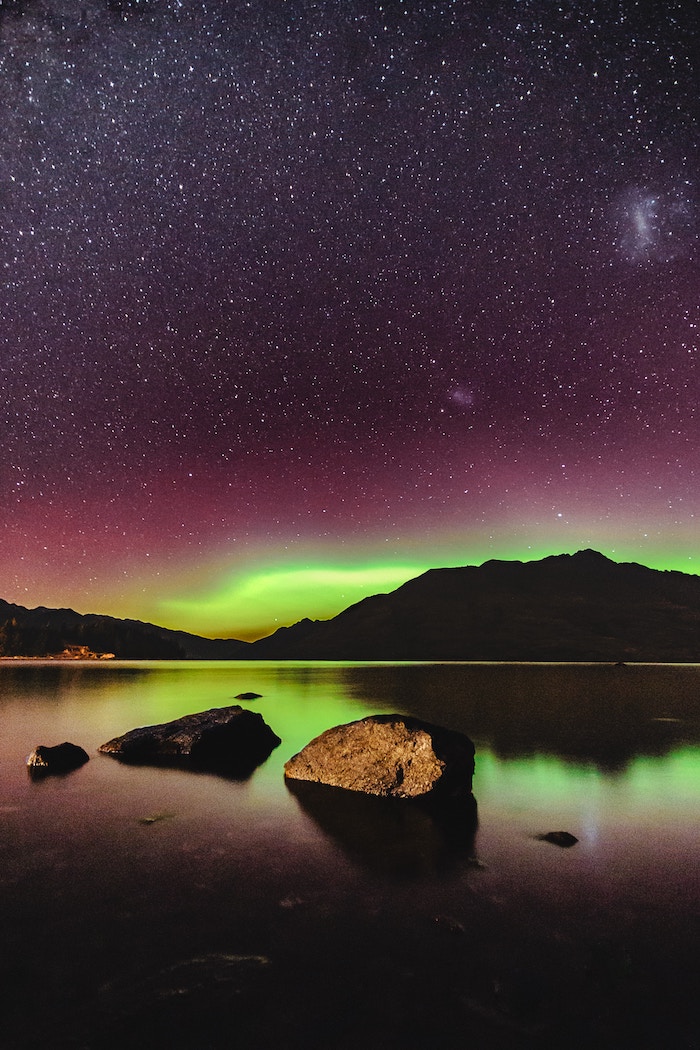
Photo by ThatPhotoGuyNL on Unsplash
Where Are the Best Places to See the Southern Lights?
Several locations across the globe serve as perfect viewing for the Southern Lights—here are just a few of them:
1: Tasmania, Australia
The island of Tasmania is a standout for Southern Lights viewing. Based in Australia’s southernmost region, Tasmania’s geographical positioning and modest light pollution make it a prime spot. Mount Wellington, a peak on the outskirts of Hobart, is a great lookout point in particular.
2: South Island, New Zealand
New Zealand’s South Island is an ideal location to catch a glimpse of the Aurora Australis. Prominent places such as Lake Tekapo and Aoraki/Mount Cook National Park provide amazing backdrops. Queenstown, with its gorgeous lakes and mountains; and Stewart Island, the southernmost region of New Zealand, also offer vantage points to observe the Southern Lights.
3: The Falkland Islands
The Falkland Islands of the South Atlantic Ocean offer an undisturbed environment that favors aurora viewing. With minimal light pollution and expansive open skies, the islands will give you an immersive experience of the Southern Lights.
4: The Patagonia Region of Argentina and Chile
The southern reaches of Argentina and Chile, notably Patagonia, have some of the most favorable conditions for observing the Southern Lights. Ushuaia in Argentina, often termed as the “End of the World;” and Punta Arenas in Chile are renowned for their proximity to the South Pole, offering a higher likelihood of aurora sightings.
5: South Georgia Island
A remote destination in the southern Atlantic Ocean, South Georgia Island is another fantastic place for viewing the Aurora Australis. This isolated locale’s proximity to Antarctica heightens the chances of Southern Lights sightings. Coupled with the incredible landscapes it offers—glaciers, mountains, and abundant wildlife—seeing the aurora here is absolutely unforgettable.
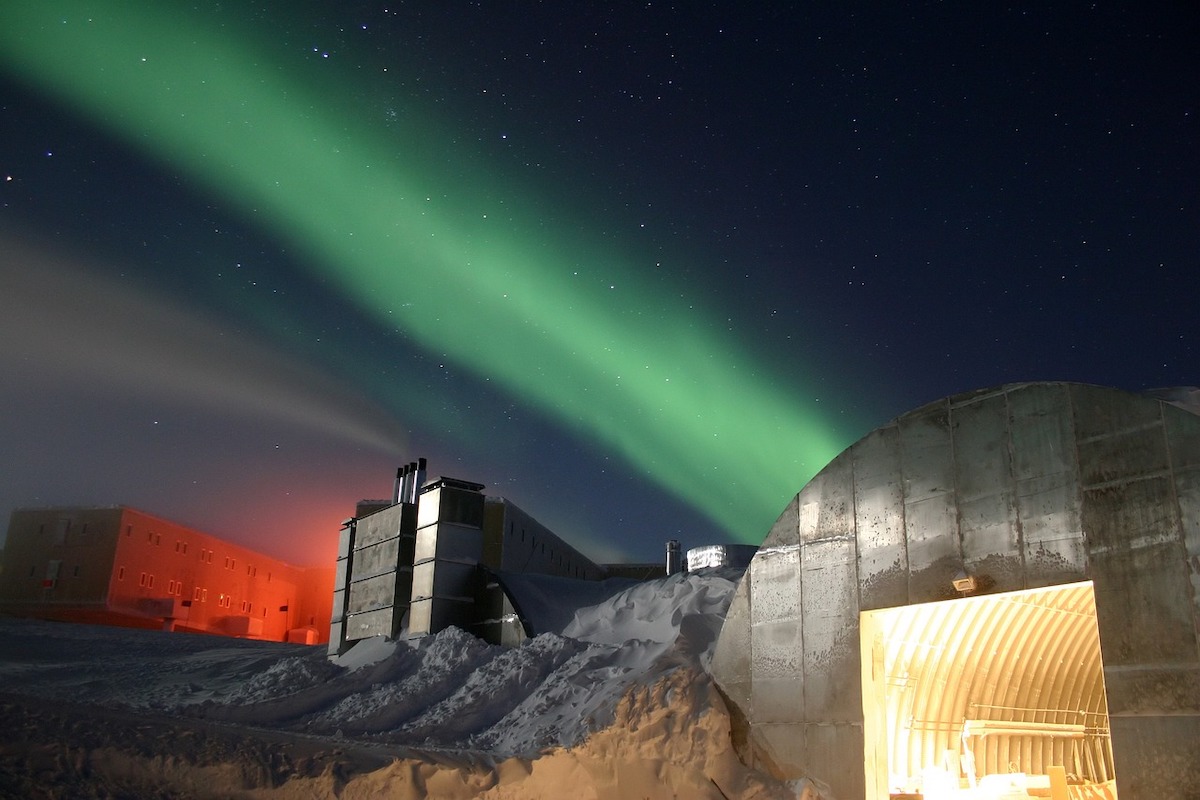
Image by WikiImages from Pixabay
6: The South Shetland Islands
Based near the Antarctic Peninsula, the South Shetland Islands present another opportunity to experience the Southern Lights in a remote, pristine environment. An Antarctic cruise that includes a stop at these islands can provide unfiltered night sky views.
Related: The 3 Best Antarctica Cruises: Kayaking, Photography & More
7: The Southern Tip of South Africa
While the Southern Lights are less commonly witnessed from the southern regions of South Africa, locations such as Cape Agulhas and the Cape Peninsula have occasionally played host to this celestial event.
8: Antarctica
For those with a taste for unique adventures, Antarctica of course is the unrivaled destination to witness the Southern Lights! Expeditions to the Antarctic Peninsula and the surrounding regions during the Austral winter (March to September) can offer amazing views of the aurora, providing a once-in-a-lifetime experience amidst the icy wilderness.
Have you had the opportunity to see the Southern Lights—or their counterpart, the Northern Lights? Share your stories and advice with the Frayed Passport community!
About the Author
 As the editor-in-chief of Frayed Passport, my goal is to help you build a lifestyle that lets you travel the world whenever you want and however long you want, and not worry about where your next paycheck will come from. I've been to 20+ countries and five continents, lived for years as a full-time digital nomad, and have worked completely remotely since 2015. If you would like to share your story with our community, or partner with Frayed Passport, get in touch with me using the form on our About page.
As the editor-in-chief of Frayed Passport, my goal is to help you build a lifestyle that lets you travel the world whenever you want and however long you want, and not worry about where your next paycheck will come from. I've been to 20+ countries and five continents, lived for years as a full-time digital nomad, and have worked completely remotely since 2015. If you would like to share your story with our community, or partner with Frayed Passport, get in touch with me using the form on our About page.Featured image by Ohan Smit on Wikimedia Commons
Information published on this website and across our networks can change over time. Stories and recommendations reflect the subjective opinions of our writers. You should consult multiple sources to ensure you have the most current, safe, and correct details for your own research and plans.
Frayed Passport is a participant in the Amazon Associates Program, an affiliate advertising program designed to provide a means for sites to earn advertising fees by advertising and linking to Amazon.com. We also may share links to other affiliates and sponsors in articles across our website.




